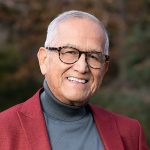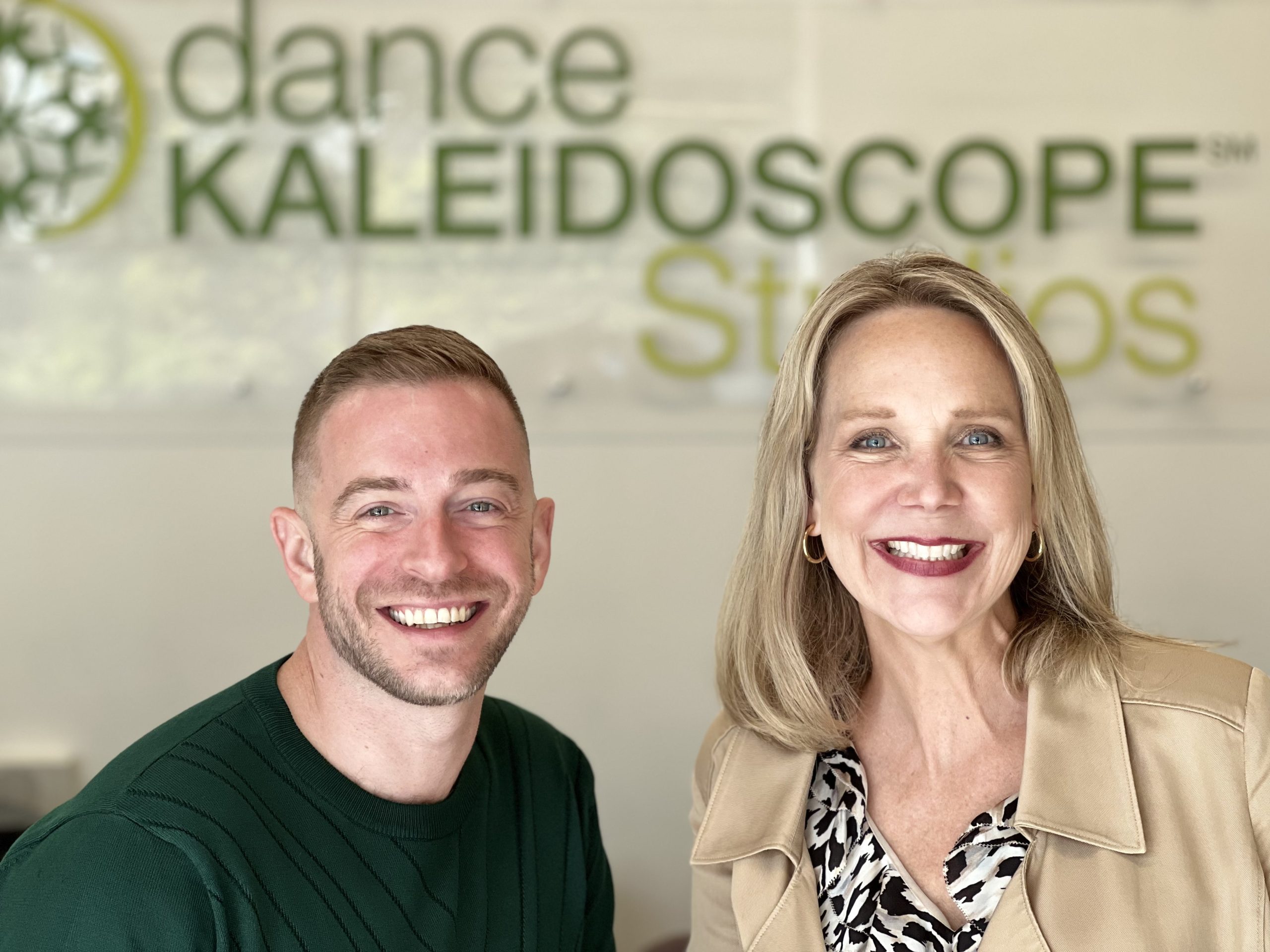
L-R Joshua Blake Carter & Kim Gutfreund – Courtesy of Jeremy Kyle. Used with permission.
Following the retirement of such figures as David Hochoy, artistic director at Dance Kaleidoscope and Janet Allen, artistic director of Indiana Repertory Theatre, and others, there has been a major and profound shift in leadership of Indy arts and nonprofit organizations. Honored with elaborate send offs, Hochoy and Allen were both celebrated for their stellar contributions to their respective organizations and for their lifetime achievements.
Now that the brouhaha has died down and dust has settled, I have made a point of reaching out to those who replaced both previously mentioned leaders as well as a few others who are newly at the helm of several institutions. Look for my upcoming profiles here.
One of those individuals, representing a new generation of leadership, is Joshua Blake Carter who joined Dance Kaleidoscope as artistic director in July 2023. Originally from Atlanta, Georgia, he spent 14 years in Chicago with Giordano Dance Chicago, first as a dancer and then as an administrator and director of Giordano II, a position he held for ten years. Recently I sat down with Carter and Kim Gutfreund, DK executive director since June of 2021, to discuss their plans to lead DK forward together. Below is an edited transcript of our conversation that took place at DK’s world class Windsor Park Studios on Indy’s eastside.
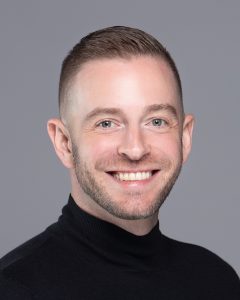
Joshua Blake Carter – Courtesy of Jeremy Kyle. Used with permission.
What response did you receive when you announced you were taking the job with DK?
Carter: When I took this position, acquaintances and people I have known for years came out of the woodwork to say, “I know of DK” or “I took classes from David.” There were so many connections and ties to this DK that I was not aware of. But it makes sense. This company has been in existence for 50 years. How could people not have been touched or connected?
What are your impressions of one another?
Carter: We are having a really good time. We find it easy to collaborate. Kim has really challenged me “How do we speak about DK? What words do we use. How do we tell people who we are?” One day I wrote something, and she came into my office and said “This is good. We are on the same page.”
The organization I left is very much like DK’s. The executive director and artistic director worked very close together and really had a nice brand control, while we are here to be an artistic outlet, it is a business, and we want to make sure we are leading a successful business and one that is going to elevate the organization.
Do your responsibilities overlap?
Gutfreund: They do a little bit. We are not a large organization, so we don’t have a marketing or development department. It’s just the two of us.
Is it intentional to keep costs down?
Gutfreund: It is. Most of our money goes into our artistic product. I want the administrative side to have as much quality as the artistic product so that is always our goal. The audience doesn’t care about that, but we can do a better job of supporting our artistic product by operating efficiently and keeping up with technology. So that has been a fun part of this job is looking at where we can do better, how do we serve our audiences and our patrons and making sure thar we are doing the best work we can do.
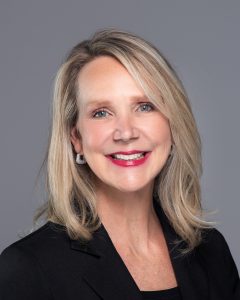
Kim Gutfreund – Courtesy of Jeremy Kyle. Used with permission.
Describe your relationship with your board.
Gutfreund: Part of being an executive director is helping them realize what their lane is and where we need their support. Our board members are fantastic, community minded good people but like any job we need to give them things to focus on to move the mission forward. Otherwise, you can have a board where everybody wants to give their two cents worth and that is not the best use of time. Our board president is really engaged. We have a great board, but we are in this 24/7 and the slice of time that they can dedicate to volunteer activities is much smaller than ours, so we need to have a mentality that if we have them, we need to use them efficiently.
How important is governance?
Carter: They’ve got skin in the game so it’s very important that they work well with us, and we work well with them. We had a board retreat a few weeks ago and everybody is supercharged. Everybody has a nice understanding of where they are needed and how each of them can best support us.
Gutfreund: We are to the point where we are setting goals with the board too. I have my goals and Josh his, but they all must be in alignment with a strategic plan.
How have been received Josh?
Carter: Everybody has been so welcoming. Interesting enough, I already small history here. Two years ago, after Kim joined DK, David brought in a piece by Brock Clawson, and I came to stage that work. That’s when I met David, Kim and the dancers and some relationships were made. The dancers are the same ones that were here before.
How did you learn about the job?
Carter: David mentioned that he was retiring when I was here two years ago, but I forgot about it. So my friend Autumn Eckman who was the former rehearsal director and resident choreographer of Giordano. is now in Georgia where I’m from. When I saw her at Christmas, she told me about the job opening and then sent me the post. I sat on it for two weeks. I had been with Giordano for 14 years but asked myself, “Am I really doing this?” but when I hit “submit” I had a feeling that it was something I really wanted.
Was it a goal of yours to be an artistic director?
Carter: Absolutely. I directed our second company at Giordano, but I had a lot of administration duties, and the balance was unequal. I was part time when I retired from dancing with them so I could freelance and do artistic things. I was choreographing everything from contemporary dance companies to back up dancers to singers to even doing a short film. I was involved in all these different things, just to dip my toes into everything. I even choreographed a musical at one of our equity Chicago theatres. It was a no brainer when they offered me this position. I don’t know who it was on the selection committee who asked me if I was willing to live here, and I said it really doesn’t make a difference where I do my job. This is a special job, and I am happy to move for it.
Did you research Indy?
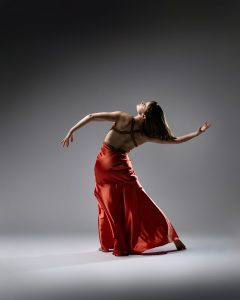
Holly Harkins – Courtesy of Jeremy Kyle. Used with permission.
Carter: A little. When I was here two years ago it was for five days in 2021 when things were reopening. I stayed in the Mass Ave. area which is very cool. When I came back for an in-person interview, I will never forget pulling up to Bottleworks and the city was alive. People were out, the restaurants and bars were full, there was vibrancy in the air. It felt like a Chicago neighborhood. I immediately knew I would be OK here.
Did you find yourself comparing Indy to Chicago?
Carter: Oh no. What was most important to me was the health of the organization. It’s in a great place. DK has been here for 50 years. It has sustained itself. That was important to me. The level of the dancers is clearly high in caliber. Also, the ability to create and shape our shows was very attractive to me. While I love to create and love to choreograph, I also want to bring in guest artists.
Gutfreund: I shared my opinions as executive director and was part of the process. Our management consulting group also advised that as executive director I could provide input, but I did not vote. I told the board that if I felt we were going in a way I absolutely could not agree with I would speak up but look who is sitting here (laughs).?
Was there a lot of competition for the job?
Gutfreund: Yes, we were really impressed with the numbers of resumes we received and the different types, but I think we really wanted someone who understood that this was not a startup and that we are leaning on the legacy that David and others left. But we are also looking to the future. Some candidates more than others understood that we cannot present something that looks so unfamiliar that they don’t even recognize Dance Kaleidoscope.
How has it felt following in Jan Virgin’s (former DK executive director) footsteps?
Gutfreund: I understood that I had big shoes to fill, and I get it. I understand in the arts that longevity is everything. It seems like organizations either have revolving doors or have longevity and people have been here for a long time. I got to meet Jan in the interview process, and she made herself available. I give her all the credit for DK is today but I also have a very different work style than Jan did so I can say, “What can we improve?” She and I are so different. I always say what worked in the past will not get us where we need to go in the future.
Jan and David were both ready to retire. If you don’t change in an organization and someone doesn’t come in and say, “We’re going to do things differently,” a decline is going to happen. I have a different skill set than Jan does. However, what we both have in common is that we love this organization and our relationships with donors are special.
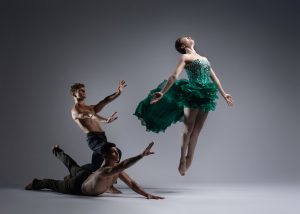
L-R Adrian Domingues, Cody Miley & Paige Robinson. Courtesy of Jeremy Kyle. Used with permission.
Have you felt welcomed?
Gutfreund: Some places I’ve worked have really been closed communities, but I have not found that to be the case in Indy. People are genuinely interested in getting to know you. It’s a midwestern thing but not common in every Midwestern place. It’s nice to go to events and people really do want to meet you and are welcoming.
How do you plan to place your own stamp on DK, Josh?
Carter: We are not getting rid of our vintage clothing. I’m just bringing in a new fashion line, a new clothing line, a new thing for you to look at that will help elevate our closet if you will. We still have these great vintage pieces, so I want people to know that the company is going to change and evolve but we are going to keep bringing back these pieces that have really shaped our legacy. You can’t know where you are going if you don’t know where you came from. That’s something we have heard our whole lives and I think it is something very important in the life of an arts organization. I have seen what happens when arts organizations lose sight of that, and it can be detrimental.
Another benefit of me having been at a company like Giordano is that it is run by his daughter who asked herself “How do I keep jazz dance relevant, bring in new choreographers and do this and maintain the history and make people aware of the foundation of where we came from.” She really did a great job of that. I learned from her what I will apply here doing that same thing. Bringing in new voices to work with our artists to help them expand their language and help them expand how to move their bodies but they are still going to remember their native tongue.
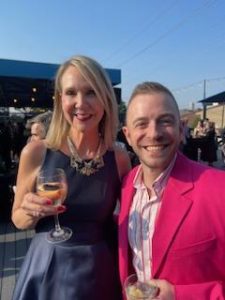
L-R Kim Gutfreund and Joshua Blade Carter – Courtesy of Jeremy Kyle. Used with permission.
Josh, what is your aesthetic?
Carter: would say it is an amalgamation of different people I have worked with. I would be a liar to say I am not influenced by jazz dance because that is where I spent my career and my time. In my time at Giordano. I got to work with choreographers who would not necessarily put themselves into the jazz vein first. They would not say that about themselves. People like Peter Chu who worked with ballet jazz of Montreal and who has done work with Hubbard Street and all these different contemporary dance companies in Chicago. He is someone who helped me expand how I move my body. He gave me new information about how I can be inspired in creating. I have worked with so many choreographers over the years. Even after I was done dancing I was still in the room and was still seeing these works created. So, my work is athletic. It is emotionally driven even if it is a piece that doesn’t have a direct narrative. There is something about the work that will take you on a journey and the end of that journey just makes you “oh, that felt good.”
Tell me about next season.
Carter: For the fall we are bringing back a work of mine called “Mother Tongue,” which I did in 2009. The music is by Niko Muhly. It’s a very obscure score. Challenging music for the audience but different and good challenging. We are doing a 2015 premier “You + Me” which is a cover of Sade’s “No Ordinary Love,” something perhaps more familiar to people but a different rendition. Then we’ll have a world premiere. I am not going to reveal the music yet just because I could change it. I have been known to do that. The whole second act is a piece titled “Kim” for my mother Kim. It is her story, starting her life again after leaving my father after thirty years of marriage. Reinventing herself and what that looks like. The music by The xx, Dr. Jean Feldman, Nat King Cole, Ólafur Arnalds, Ellen Allien & Apparat, Nina Simone and Laura MvulaThat work is the entire second act. I am very excited. I just finished “Kim” today. It is the first time it has ever been remounted. It was only done once before for an all-female company.
How have the dancers welcomed Josh?
Gutfreund: They were very excited. We really tried to keep them in the loop as much as we could during the entire process. The energy here is great. All our offices are here now. We have all left Butler and everybody is under one roof now. The administrative staff is now part of everything. We walk back and forth and see everything which helps us connect so when I have to write a press release about “Kim” I have a lot more frame of reference. When he describes it, I can see it and it comes together. I think everyone is excited about the newness.
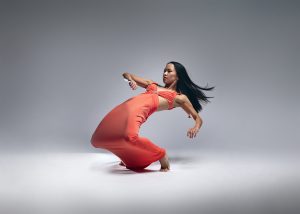
Julie Russell. Courtesy of Jeremy Kyle. Used with permission.
Summarize the season. What audiences can expect.
Carter: At our core we are the same DK audiences have come to know and love, bringing contemporary dance to Indianapolis stages, and providing entertainment to patrons of all ages. As I mentioned previously, the difference is your favorite dance company is getting some “new clothes” if you will. As I introduce my work into the repertory, a new dance vocabulary will be brought to the stage along with music selections that might feel different and perhaps a new look costume-wise. We’ll continue to perform celebrated DK repertory, too. Dance Kaleidoscope is where legacy and “what’s next” in contemporary dance collide.
What can the public expect from your artistic leadership at DK in general?
Carter: More voices. I plan to expand our repertory with guest artists of different backgrounds from around the country and different corners of our dance world. Giving dancers a variety of choreographers to learn from is like teaching them many different languages. Bringing guest artists to Indy is not only enriching for our company artists, but it enriches our audiences and community as well. It can be the reason new dancers look at us for future employment and thus grows our dance community. I want to be a collective part of the community that elevates Indy to a national dance destination, not just a stop on the way to somewhere else.
What can the public expect under your and Josh’s combined leadership?
Gutfreund: We both are creative visionary leaders and sharing leadership enables us to combine the best of our styles, skills, and expertise. People can expect true partnership. From day one we talked about the idea that we don’t work in separate silos. We both value an environment of trust and personal responsibility, and it’s so clear we both want what’s best for Dance Kaleidoscope.
For more information about Dance Kaleidoscope’s 2023-2024 season, visit dancekal.org.





